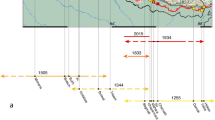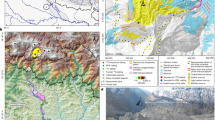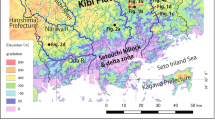Abstract
THE triangle-shaped Indian peninsula is a plateau characterized by several mountain ranges, hills, rivers, deep broad valleys and plains of different elevations. Bordered by continental shelfs, it is believed to be a Pre-Cambrian platform the basement of which is formed by Archaean gneisses, schists and igneous metamorphosed rocks. While the Deccan Traps are the cover sediments in north-western peninsular regions, the basement rocks themselves are exposed in the southern, eastern and northern territories occupying nearly two-thirds of the shield area.
This is a preview of subscription content, access via your institution
Access options
Subscribe to this journal
Receive 51 print issues and online access
$199.00 per year
only $3.90 per issue
Buy this article
- Purchase on Springer Link
- Instant access to full article PDF
Prices may be subject to local taxes which are calculated during checkout
Similar content being viewed by others
References
Gubin, I. E., Bull. Inter. Inst. Seism. Earthq. Eng., 5, 109 (1968).
US Coast and Geodetic Survey, Earthquake Data Report, No. 77–67 (January 9, 1968); ibid., No. 31–69 (May 15, 1969).
Arora, S. K., and Manekar, A. M., Bull. Seism. Soc. Amer., 59, 777 (1969).
Herrin, E., Bull. Seism. Soc. Amer., 58, 1193 (1968).
Author information
Authors and Affiliations
Rights and permissions
About this article
Cite this article
ARORA, S., VARGHESE, T. & KRISHNAN, C. Some Aspects of the Structure of Southern India based on Recent Bhadrachalam Earthquakes. Nature 225, 261–262 (1970). https://doi.org/10.1038/225261a0
Received:
Revised:
Issue Date:
DOI: https://doi.org/10.1038/225261a0
Comments
By submitting a comment you agree to abide by our Terms and Community Guidelines. If you find something abusive or that does not comply with our terms or guidelines please flag it as inappropriate.



